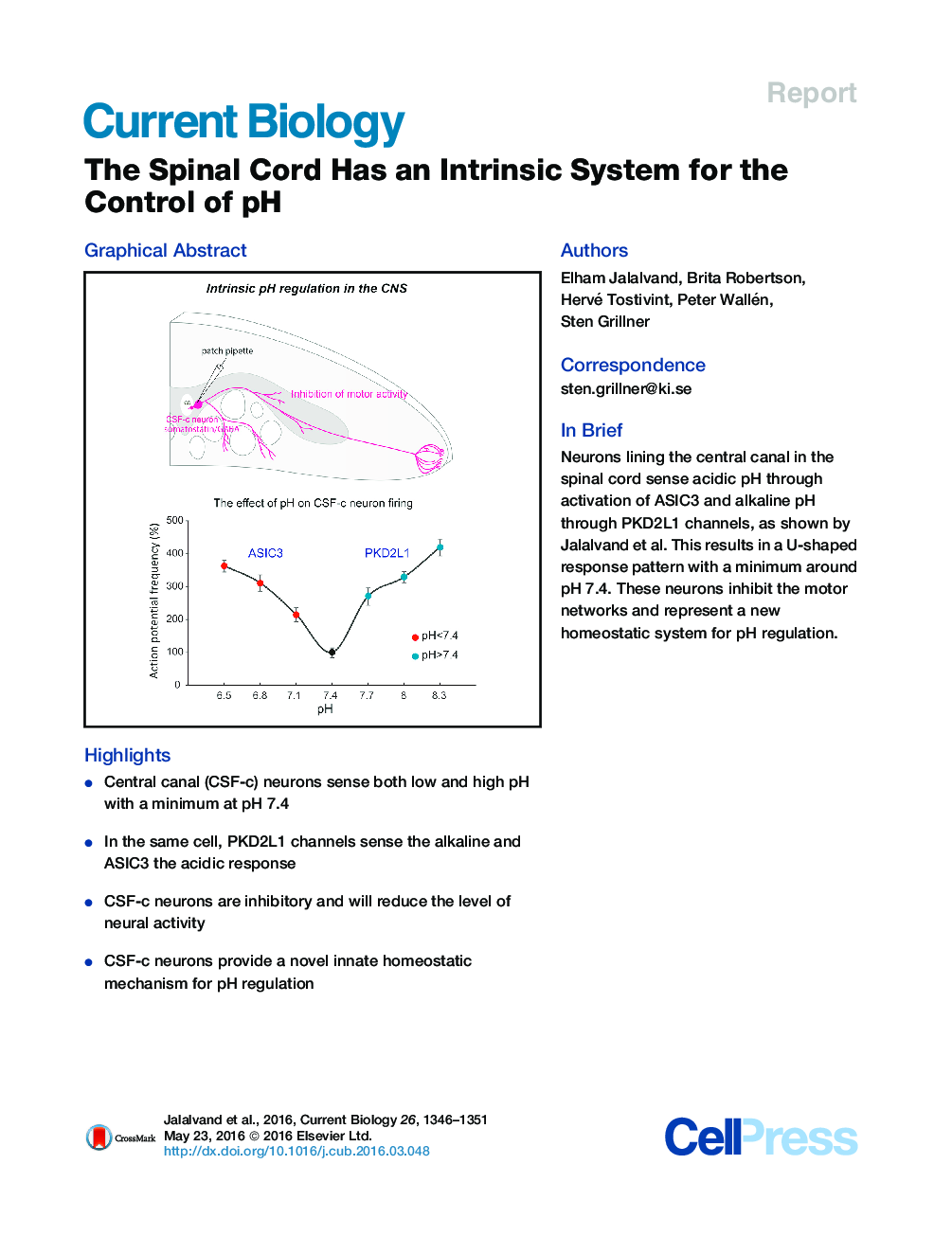| کد مقاله | کد نشریه | سال انتشار | مقاله انگلیسی | نسخه تمام متن |
|---|---|---|---|---|
| 2042652 | 1073228 | 2016 | 6 صفحه PDF | دانلود رایگان |

• Central canal (CSF-c) neurons sense both low and high pH with a minimum at pH 7.4
• In the same cell, PKD2L1 channels sense the alkaline and ASIC3 the acidic response
• CSF-c neurons are inhibitory and will reduce the level of neural activity
• CSF-c neurons provide a novel innate homeostatic mechanism for pH regulation
SummaryFor survival of the organism, acid-base homeostasis is vital [1 and 2]. The respiratory and renal systems are central to this control. Here we describe a novel mechanism, intrinsic to the spinal cord, with sensors that detect pH changes and act to restore pH to physiological levels by reducing motor activity. This pH sensor consists of somatostatin-expressing cerebrospinal fluid-contacting (CSF-c) neurons, which target the locomotor network. They have a low level of activity at pH 7.4. However, at both alkaline and acidic pH, the activity of the individual CSF-c neuron is markedly enhanced through the action of two separate channel subtypes. The alkaline response depends on PKD2L1 channels that have a large conductance and an equilibrium potential around 0 mV, both characteristics of mouse PKD2L1 channels [3, 4 and 5]. The acidic response is due to an activation of ASIC3 [6]. The discharge pattern of the CSF-c neurons is U-shaped with a minimum frequency around pH 7.4 and a marked increase already at slightly lower and higher pH. During ongoing locomotor activity in the isolated spinal cord, both an increase and as a decrease of pH will reduce the locomotor burst rate. A somatostatin antagonist blocks these effects, suggesting that CSF-c neurons are responsible for the suppression of locomotor activity. CSF-c neurons thus represent a novel innate homeostatic mechanism, designed to sense any deviation from physiological pH and to respond by causing a depression of the motor activity. Because CSF-c neurons are found in all vertebrates, their pH-sensing function is most likely conserved.
Graphical AbstractFigure optionsDownload high-quality image (135 K)Download as PowerPoint slide
Journal: - Volume 26, Issue 10, 23 May 2016, Pages 1346–1351